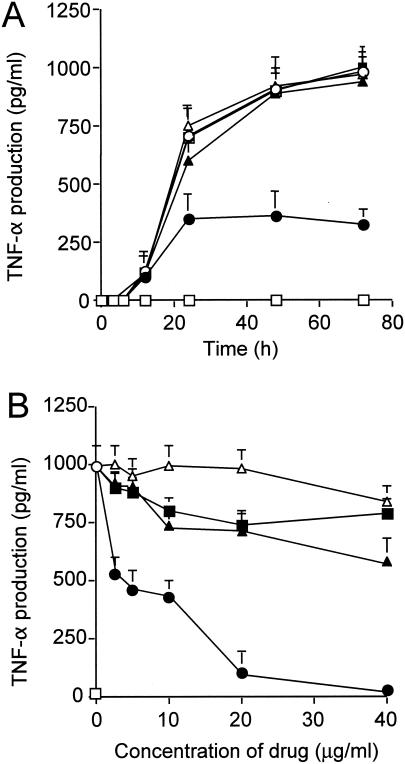FIG. 1.
Time course of TNF-α production in TSST-1-stimulated human PBMCs in the presence or the absence of anisodamine and related compounds (A) and the effects of various concentrations of the drugs (B). (A) PBMCs (5 × 105 cells) were stimulated with TSST-1 (10 ng/ml) for the indicated periods of time. Addition of the drugs (at 20 μg/ml) was as follows: open circles, none; closed circles, anisodamine; closed triangles, atropine (a tropane alkaloid related to anisodamine); closed squares, scopolamine (a tropane alkaloid related to anisodamine); open triangles, aspirin; open squares, TNF-α levels in control samples without TSST-1 stimulation. (B) PBMCs (5 × 105 cells) were stimulated with TSST-1 (10 ng/ml) for 48 h in the presence or the absence of the drugs. Open circles and open squares, TNF-α levels in control samples with and without TSST-1 stimulation, respectively. Addition of the drugs (at the indicated concentrations) was as follows: closed circles, anisodamine; closed triangles, atropine; closed squares, scopolamine; open triangles, aspirin. The levels of immunoreactive TNF-α in the cell-free culture supernatants (A and B) were measured by ELISA.

